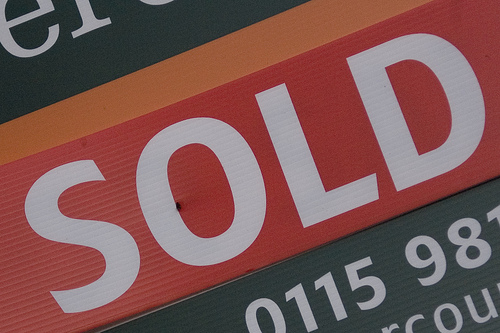Economy Watch: Home Sales, Federal Bailouts
The U.S. Department of Commerce reported that new home sales ticked upward again in April by 7.3 percent to an annualized rate of 323,000 units. That was the highest rate since December, on the heels of a modest increase the month before.
May 25, 2011
By Dees Stribling, Contributing Editor
The U.S. Department of Commerce reported that new home sales ticked upward again in April by 7.3 percent to an annualized rate of 323,000 units. That was the highest rate since December, on the heels of a modest increase the month before.
Such a movement is welcome news, but it doesn’t really change housing market fundamentals, which have a Limburger-like aroma. The market is still awash with inventory–a heaping-helping of foreclosed properties, with a side of short sales–and characterized by a historically small pool of buyers, due to lingering unemployment and tight underwriting standards.
Still, a glimmer of hope is a glimmer of hope. Commerce also reported that the median sales price for a new home nationwide rose 1.6 percent in April to $217,900. Compared with the same month last year, the median price increased 4.6 percent.
Government Receives Bailouts Back
A couple of high-profile bailout recipients back in 2008 and ’09 made some high-profit repayments to the U.S. government on Tuesday. Auto giant Chrysler, for one, declared the day “payoff day” as it wired $5.8 billion and $1.7 billion to the U.S. and Canadian governments, respectively.
The payment ended a difficult chapter in the automaker’s history. As recently as two years ago, it wasn’t clear the company had any future, but the government ponied up some bailout money, despite a fairly strident chorus of those who urged the government to offer no help (and some of those same politicos now are backpedaling on that economic survival-of-the-fittest rhetoric these days).
Also on Tuesday, the government received a small profit from its first sale of American International Group stock, the legacy of a bailout that made Chrysler look like weak tea. The U.S. Treasury’s holdings in AIG thus dropped from an overwhelming 92 percent to a merely commanding 77 percent. It will still be quite a while before the government recovers the $53 billion it has invested in the company.
Banks See Strong Quarter
According to the FDIC on Tuesday, U.S. banks had their best quarterly results since 2Q07–an aggregate profit for the industry of $29 billion during 1Q11, a 67 percent increase over the same quarter in 2010. That’s despite the fact that the number of “problem banks” (by FDIC reckoning) numbered 888 during the first quarter of 2011, up slightly from the previous quarter.
FDIC chairman Sheila Bair is posed to step down from her position soon. She did note in her final press conference, however, that healthy banks are still too skittish about making new loans, though they are also facing a relative dearth of creditworthy borrowers.
Wall Street had a roller-coaster of a day on Tuesday, with the Dow Jones Industrial Average eventually settling for a small 25.05-point decline, or 0.2 percent. The S&P 500 lost a scant 0.08 percent, while the Nasdaq fell 0.46 percent.








You must be logged in to post a comment.